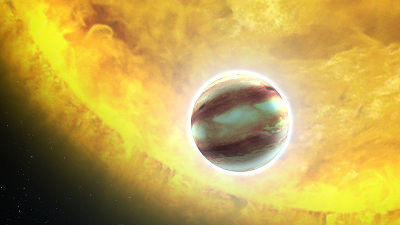James Webb Space Telescope observes 'coldest ice in the universe'

The
An Ice Age JWST inventory of dense molecular cloud ices | Nature Astronomy
https://doi.org/10.1038/s41550-022-01875-w
Webb Unveils Dark Side of Pre-stellar Ice Chemistry | NASA
https://www.nasa.gov/feature/goddard/2023/webb-unveils-dark-side-of-pre-stellar-ice-chemistry
The James Webb Telescope detected the coldest ice in the known universe – and it contains the building blocks of life | Live Science
https://www.livescience.com/coldest-cloud-webb-telescope
James Webb Space Telescope discovers the coldest interstellar ice ever seen | Space
https://www.space.com/james-webb-space-telescope-coldest-ice
The James Webb Space Telescope, developed as a successor to the Hubble Space Telescope, was launched in December 2021, and observations using the main sensor began in July 2022. Since its launch, it has been able to take overwhelmingly high-precision space photos compared to the previous generation, and has been able to take clear pictures of galaxies far away. Observations of a previously unknown exoplanet, LHS 475 b, have been reported on the moon.
Finally the James Webb Space Telescope succeeded in observing undiscovered planets - GIGAZINE

by NASA's James Webb Space Telescope
And according to the content published in Nature Astronomy, which publishes cutting-edge research papers in the fields of astronomy, astrophysics, and planetary science on January 23, 2023, the James Webb Space Telescope has newly 'observed The coldest ice in the world' was discovered at the deepest part of the interstellar molecular cloud. The temperature of the ice is minus 440 degrees Celsius (minus 263 degrees Celsius), which is quite close to the absolute zero temperature minus 459.67 degrees Celsius (minus 273.15 degrees Celsius). The research team named this ice research program 'Ice Age' and introduced its initial results in a paper.
This time, a team of scientists used the James Webb Space Telescope's infrared camera to investigate a molecular cloud called 'Chameleon I' about 500 light years away from Earth. Molecular clouds are composed of frozen molecules, gas, and dust, and are thought to be the birthplaces of stars and planets. It has been confirmed that molecules such as carbonyl sulfide , ammonia, methane, and methanol are frozen in this molecular cloud detected by the James Webb Space Telescope. According to the researchers, these molecules will one day grow into part of the hot core of the star, and may become part of an exoplanet in the future. NASA said in a statement that the discovery is important because ice is an essential source of important elements such as carbon, hydrogen and oxygen when considering habitable planets. says.

In a NASA announcement about the discovery, Melissa McClure, an astronomer at the
Study co-author Will Rochat, an astronomer at the Leiden Observatory, said: 'To identify the molecules in Chameleon I, light from a star beyond the molecular cloud was used to detect dust in the molecular cloud. Here, the identification of complex organic molecules such as methanol and ethanol suggests that they develop from such specific molecular clouds. It suggests that many stars and planetary systems inherit highly complex chemicals from molecular clouds,' explains the significance of the discovery. The image below graphically illustrates spectral data from the James Webb Space Telescope, which can be analyzed from the absorption of specific wavelengths by the ice in the molecular cloud.

Regarding this observation method, Klaus Pontoppidan of the Space Telescope Science Institute in Baltimore, Maryland, who was involved in the study, said, ``Ice appears as a depression against the light of the stars behind it.It has a low temperature and high density. In areas where much of the light from stars is blocked, we can detect starlight and identify ice in molecular clouds, which required exquisite sensitivity,' said James Webb. He insists on the splendor of observations by space telescopes.
According to McClure, the discovery is just the first step in seeing how ice evolves in a planet's pristine state. Therefore, it is expected that this will lead to important future discoveries such as which mixture of ice is maintained on the planet, or in other words, which elements reach the surface of the planet.
Related Posts:
in Science, Posted by log1e_dh






